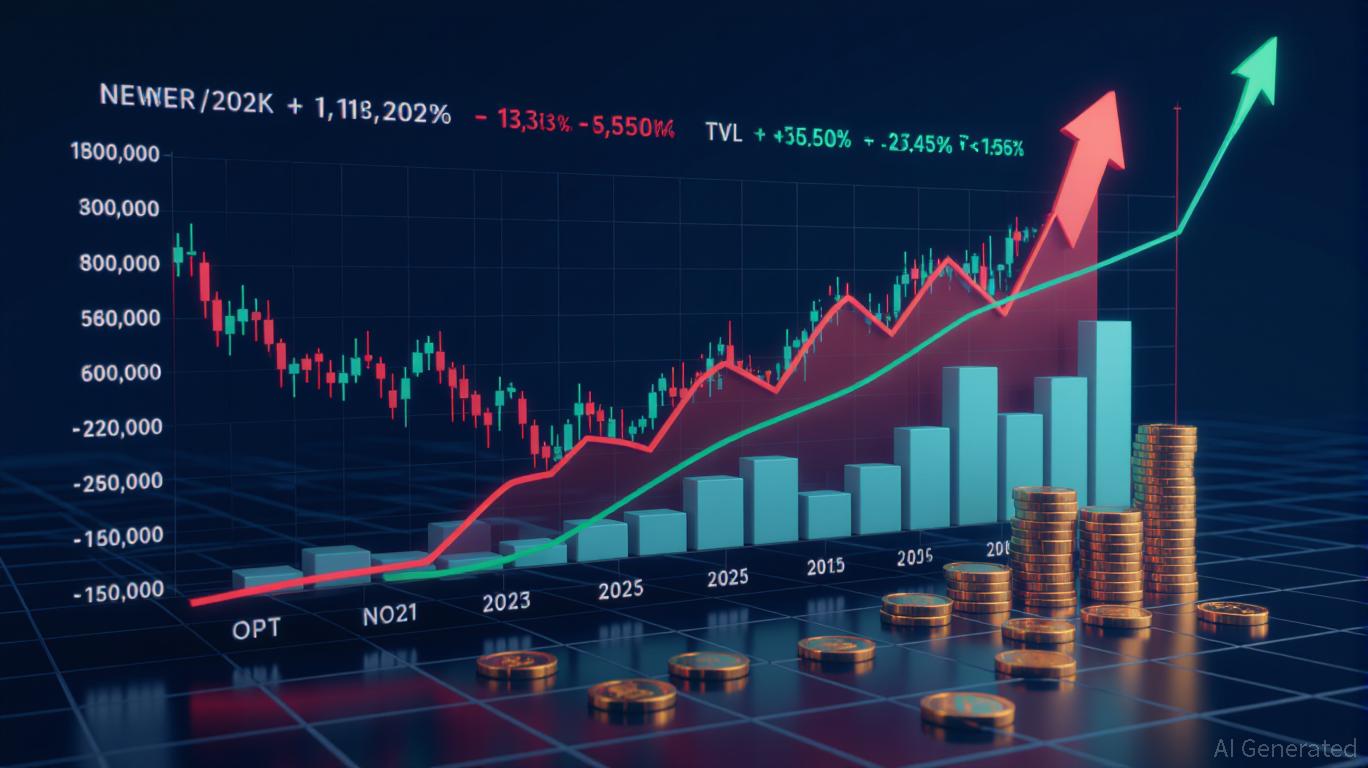Astar 2.0’s Tactical Rollout and Its Impact on the Market
- Astar Network launched Astar 2.0 on September 13, 2023, aiming to unify Ethereum and Substrate blockchains via Astar Link. - The platform emphasizes interoperability, revised tokenomics, and enterprise partnerships to challenge L2 leaders like Arbitrum and Optimism . - With 150,000 TPS and cross-chain integrations, Astar 2.0 targets scalable DeFi adoption but faces TVL declines and competition from ZK-rollups. - Enterprise collaborations with Sony and Toyota highlight real-world use cases, though market
Strategic Rollout: The Core Innovations of Astar 2.0
Astar 2.0’s unique value is built on three main foundations: cross-chain operability, token economics, and business integration. The launch of Astar Link stands out as a game-changing element. Serving as a central point for cross-chain operations, Astar Link allows for effortless communication between EVM and Substrate chains, minimizing obstacles for both developers and end-users, as described by
Tokenomics are also a key focus. Astar 2.0 introduces updated inflation policies, transaction fees, and a new Staking 2.0 system, all crafted to promote sustained engagement and ensure fairness for developers and users, according to

Competitive Landscape: Astar 2.0 Versus Industry Leaders
To gauge Astar 2.0’s potential for disruption, it’s important to compare it with the top L2 contenders. Arbitrum and Optimism currently lead the Ethereum L2 market, boasting TVLs of $15.94 billion and $9.36 billion, respectively, as reported by
Astar 2.0’s hybrid design sets it apart by directly tackling these shortcomings. Its partnerships with Soneium and
Market Dynamics and Adoption: Overcoming Industry Challenges
Even with Astar 2.0’s technical advancements, the DeFi sector as a whole has encountered significant obstacles. The total value locked (TVL) across L2 platforms dropped by $12 billion in early November 2025, according to
Transaction data further underscores Astar’s promise. While Polygon currently leads with 68 million daily transactions, as reported by
Investment Perspective: Balancing High Risk and High Reward
For those considering early investment, Astar 2.0 offers both significant potential and considerable risk. Its hybrid framework and focus on enterprise solutions make it well-suited to address the rising demand for interoperability—a challenge even Ethereum continues to face. Success, however, will depend on execution: Can Astar Link truly provide seamless cross-chain functionality? Will its business partnerships lead to substantial TVL growth?
The overall L2 sector presents a mixed scenario. While Optimistic Rollups like Arbitrum and Base command the majority of TVL, ZK-Rollups such as
Final Thoughts
The launch of Astar 2.0 highlights the blockchain industry’s ongoing drive for innovation. By tackling the challenges of interoperability, tokenomics, and enterprise integration, Astar has established itself as a strong contender in both the DeFi and L2 arenas. For investors, the challenge is to weigh enthusiasm with prudence: while Astar’s vision is bold, its future will ultimately be determined by its ability to deliver on its promises.
Disclaimer: The content of this article solely reflects the author's opinion and does not represent the platform in any capacity. This article is not intended to serve as a reference for making investment decisions.
You may also like
Hyperliquid (HYPE) Price Rally: Could This Spark Institutional Interest?
- Hyperliquid (HYPE) surged 64.8% in H1 2025, driven by institutional-grade on-chain liquidity innovations and hybrid DeFi infrastructure. - Its HLP model, with $500M AUM and 75% decentralized perpetual trading volume share, challenges centralized exchanges with transparent, real-time liquidity. - Low-fee structure (0.45% taker) and HIP-3’s permissionless market-creation protocol expand utility to tokenized assets, attracting Robinhood and 21Shares. - Regulatory scrutiny and KYC challenges persist, but non

Meta has been exposed for making huge profits through a massive number of fraudulent advertisements.
The Surge in MMT Token Value: A Driving Force in DeFi or Just a Temporary FOMO Hype?
- MMT token surged 1330% due to high-profile exchange listings and liquidity incentives, sparking debates over sustainability. - Proponents highlight Momentum's DeFi roadmap and institutional infrastructure as blockchain innovation catalysts, while skeptics warn of speculative overreach. - Phase One delivered $12B trading volume and $265M TVL, but recent price volatility ($4.4 to $2.06) and $109M futures liquidations signal market fragility. - On-chain metrics remain opaque, with a 7.2 turnover ratio indic
